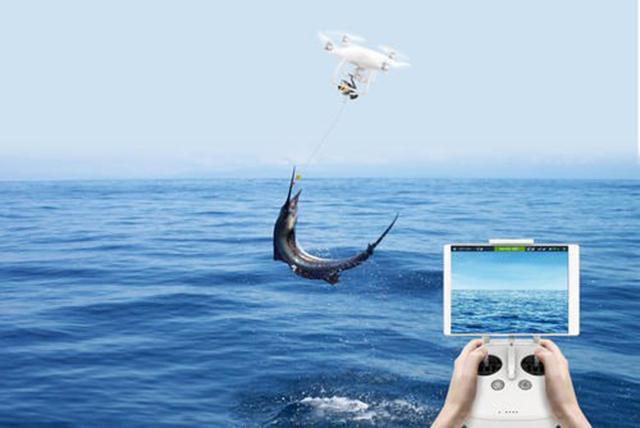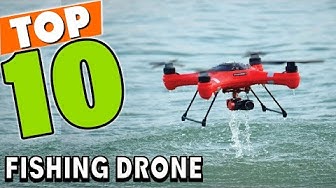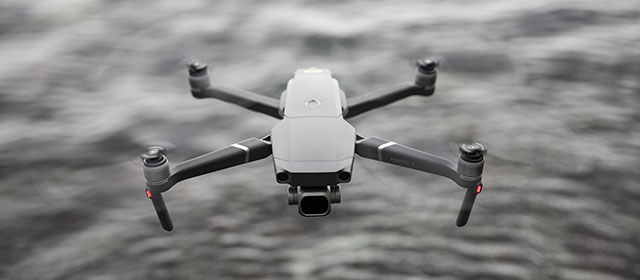
This article will discuss the basics behind a drone fishing system. We will also discuss what to look out for when selecting your drone, battery life and payload. We'll then discuss ways to get the best out of your drone. You'll find some great tips and tricks in the following sections. You'll soon have the drone of your dreams! Let's get !... going and maybe even catch a few more fish!
Basic drone fishing rig
You will need a good set hooks to get started with drone fishing. Double the fishing line, and make sure it is mono or braid. A Cat's Paw Loop or Uni knot should be tied to the fishing line. You will also need a sinker (2-8 oz) and hooks (to attach to each section of the backbone). Attach the snap swivel's lead loop to your drone's end loop.
You can make a fishing drone in many different ways. The simplest method is to attach a hook to your drone's landing gear, and spin it until the line comes free. Other low-cost ways include using a dropper to keep the fishing line below the drone and a drop line. A dropper allows you to keep the main line below the drone without getting tangled with the propellers. You can add accessories to your fishing drones, such as a dock and a battery pack.
After you have purchased the drone fishing rig you will need additional equipment. A fishing line that is approximately 700m long, as well as a bait-dropping apparatus are required. These are all optional extras, but will make your drone fishing experience more enjoyable. A drone can give you a better view of the surroundings and help you spot fish easier.

Payload for drone fishing rig
You need to know the safety precautions that must be taken if you plan to catch a fish with a drone. Strong winds and rain are not safe conditions for your drone to fly. Here are some steps:
First, ensure that your drone is strong enough to carry your weight. It will not be stable when loaded with braided line or heavy lures. If you are fishing near the seaside, wind can blow the drone off course. Also, it's important to verify local regulations and laws as some may prohibit you from fishing with a drone. If you decide to fish with your drone, make sure it has a good carrying capacity.
The next step is to determine which accessories you'll need to mount on your drone. To minimize the problems of weight distribution, it's a good rule to use a rigging that has a central connection point. The best attachment points for drones are motor struts, landing gear, or legs. Payloads attached to the camera and/or gimbal can cause damage. A simple solution is to tie a length of fishing line from one corner to the other. Tape can be used to keep it from falling apart.
Battery life for drone fishing rig
Before you take off fishing with your drone, make sure to check all the gear and batteries. This will allow you and your drone to have a longer battery life. Some drones can be charged with car batteries or solar panels. Make sure your batteries are fully charged before you start. This will make sure your drone is ready when you arrive at your fishing spot.

Another important factor to consider is the drone's flight time. While some drones can fly longer than others, the average drone can fly for around twenty-two mins. This is great if you're looking to spend hours on the water with your drone. A drone that has limited endurance is likely to be unusable and renders it impossible to catch fish.
Once you have set up the fishing rig and attached the fishing line clip or motor struts to it, Attach the bait and line to the drone. Make sure that you lock your reel before you fly your drone. Once you are ready, unlock it. As the drone drops the bait into the water, the tension will increase. Remember to charge the battery after every use, or it may not work properly.
FAQ
What kind of batteries is a drone using?
Lithium-ion batteries are the most common type of battery for drones. A typical drone consumes between 3 and 6.
Which drone is best for beginners?
One of the most popular beginner drones is the DJI Phantom 2 Vision+. The 4K camera on this model allows you to take stunning aerial photos and videos. This drone can be navigated using the built-in GPS.
Is it possible to spy on someone with a drone?
Anyone can spy on you with a drone. To protect yourself from drones, you must be aware of them. Do not hesitate to call 911 if a drone is seen flying.
Is it safe to fly a drone while driving?
Drone flying at high speed is dangerous. Additionally, you may hit pedestrians or animals. In addition, you could damage your car by hitting power lines, trees, or buildings.
Can my drone be flown in my local park?
You can fly drones in parks around the globe. Due to safety concerns, certain countries don't allow you to fly drones in parks. See our list to see where drones can be flown legally for fun.
What laws apply to drones flying above private property?
Recently, the FAA released new rules for commercial drone operations. These rules only apply to UAVs less than 55 lbs and lower than 400 feet above the ground. Commercial operators will need to register with FAA and get a license from agency. When operating in restricted areas or near airports, they will need to obtain permission from the local authorities.
Where Are Drones Banned?
The FAA prohibits drones from flying within close proximity to airports, stadiums and sporting events, as well as nuclear power plants, hospitals and prisons. They allow them to fly at nights using GPS technology.
Statistics
- According to the multiple listing service (MLS), houses and apartments with drone photographs are up to 68 percent more likely to sell than those without pictures. (thedroneu.com)
- Research and Markets predict a growth rate of 51.1% over the next five years. (thedroneu.com)
- According to ZipRecruiter, the minimum hourly wage of drone pilots is $20. (thedroneu.com)
External Links
How To
How To Fly Drones For Beginners
A drone can be used to fly remotely controlled aircraft for photography, surveillance, scientific research, hobby and commercial purposes. The technology behind drones has been around since World War II. DJI's Phantom quadcopters became commercially available in 2010. There have been many types of drones since then, including beginner-friendly drones like the Parrot AR Drone 2.0 and professional-grade multi-rotor crafts like the DJI Mavic Pro.
There are several ways to fly a drone, including;
-
Remote control – This technique uses a control device attached directly to your hands that allows you steer the drone around its flight path. There are two main types for controllers: Joysticks or On/Off switches, which can be used to control the drone's flight path.
-
Manual Control - Using a smartphone app, this method allows users to remotely operate the drone via GPS coordinates. You will need to keep track of where the drone is going and follow the directions from the app.
-
Autonomous Flight: This means that the drone will take care of all the piloting. It's basically flying autonomously without any human intervention. To enable autonomous flight, the drone should have a built in camera and sensors capable recording images and data.
-
Triggered Flight – This method is very similar to manual flight. The pilot creates a route that the drone will follow until it reaches the destination. Once the programmed route has been completed, the drone returns to the base automatically.
-
Landing Gear- Some drones include landing gear that allows for safe landing if the power goes out or they run out of batteries.
-
Goggles - Some pilots wear goggles to protect themselves from debris while operating.
-
Camera – Some drones have cameras, which allow you to take photos or videos from up high.
-
Obstacles: Some drones are equipped with obstacle avoidance systems to prevent them from hitting obstacles.
-
Speed – Some drones can reach speeds in excess of 40 mph.
-
Battery Life: Most drones have a battery life of between 20 and 30 minutes depending on how many power sources you use.
-
Range - Depending on the model, some drones can travel up to 30 miles away.
-
Power source - Some drones require an external power source; others work off internal batteries.
-
Weight - Some drones have a weight of less than 1 pound and others weigh 4 lbs.
-
Size - From small drones that can be carried in the palm of one's hand to larger drones that weigh over 50 pounds, drones come in a variety of sizes.
-
Price - All drones fall within a specific price range, from high-end models that can cost thousands of dollars to lower-cost options starting at $100.